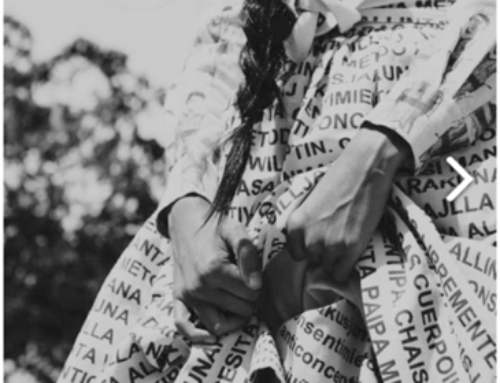 If you Google Spiral Dynamics, you will find hundreds of images and thousands of websites including, scholarly articles, discussions, blog posts, self-assessments and more. To say the theory has had a profound effect would be an understatement. But where did Spiral Dynamics come from, what is it, and how can we use it to better understand individuals, communities, and nations and what are its implications for futurists and foresight professionals? These are the questions I intend to answer and in turn perhaps gain a greater understanding myself.
If you Google Spiral Dynamics, you will find hundreds of images and thousands of websites including, scholarly articles, discussions, blog posts, self-assessments and more. To say the theory has had a profound effect would be an understatement. But where did Spiral Dynamics come from, what is it, and how can we use it to better understand individuals, communities, and nations and what are its implications for futurists and foresight professionals? These are the questions I intend to answer and in turn perhaps gain a greater understanding myself.
Origins of Spiral Dynamics
The origins were in the 1950s when Clare W. Graves, a professor of Psychology at Union College, developed his Theory of Adult Human Development. Graves collected data from about 1,065 adults from ages 18-61, primarily his students and with that information was able to develop his epistemological theory. This was in order to help him organize the many approaches to human nature and answer questions about psychological maturity. Graves describes his theory as an emergent, cyclical, double-helix theory of adult bio psychosocial systems development.
Graves inspired two other professors in Don Beck and Chris Cowan who helped him spread knowledge of his theory and in turned coined the phrase Spiral Dynamics. The two released Spiral Dynamics: Mastering Values, Leadership, and Change in 1996, ten years after Graves had passed. The two applied Spiral Dynamics across many areas such as politics and education over several decades. Beck released Spiral Dynamics Integral in 2016 as a collection of discussions on the theory and its various applications.
What is it?
Spiral Dynamics is a system of interconnected levels or value systems (memes), where each is represented by a different color with a unique set of priorities, beliefs, and worldviews. People, societies, and cultures move through these levels depending on life-conditions, experiences, and challenges. These colors identify ways of thinking rather than specific people. Levels have an entry, peak, and exiting stag. They overlap and at every stage, we are influenced by multiple levels. Progress or regression through the spiral is level by level and levels alternate between being internally (self) and externally (community) focused.
What are the Levels?
The spiral consists of eight levels with the first six representing first tier levels of consciousness with the second tier consisting of the final two levels that require a greater leap in consciousness. No level is better or more important than another and the first six levels exhibit a sense of my way or the high way as far as what worldview is correct. I’m going to eliminate Beige off the bat as it is the least common level due to it mostly being evident in infants and some elderly. This level is the survival/instinct level and less than 1% of the world’s population falls in this level. For the remaining six levels, I think this table inspired by Whole Foods CEO John Mackey’s speech about Spiral Dynamics titled “Upper Floor Human Development.”
We can see that the levels do in fact alternate between express-self and sacrifice-self as Beck states in Spiral Dynamics Integral. One goes from Purple (Tribalism) to Red (Egocentric) when one stops believing in the mystical and traditions of Purple. We go from Red to Blue (Authoritarian) when we realize there is need for a higher order and need to sacrifice self. This is the point where patriotism is the strongest. After Blue, one shifts into Orange (Achievist) when they feel they have greater value and deserve greater recognition. Once one loses their interest in achievement, the shift into Green (Egalitarian) and a focus on the community and improving conditions for all. The next jump is far greater to Yellow (Integral). Eventually, Yellow discovers it cannot solve all of the worlds problems and seeks out others to help. The current top level, Turquoise imagines all of existence as one universally connected and interdependent (Holistic) system. Yellow and Turquoise are the first levels that understands that anyone one particular view is not “right.” Up to that point, people at each level believe, if only everyone were blue/orange/green (whatever color they are), then things would be good!
We can also note an increase in complexity as one moves through the spiral with Yellow (Integrative) and Turquois (Holistic) being the most complex levels. Beck and others including Ken Wilbur note signs of an emerging ninth level in Coral, but as of yet, there is no set definition for this level nor enough individuals expressing this level to include it. However, as human consciousness evolves over the coming decades and centuries, humankind as a whole will continue shifting up the spiral and revealing new levels.
Why Does it Matter?
With this understanding of Spiral Dynamics, we can now consider its applications in foresight and futures studies. In foresight, it has applications in CLA, scenario building, visioning, and several futures frameworks. When looking to enact change, particularly in complex social systems, we need to consider where along the spiral individuals in these systems fall along the spiral. For example, in the United States, three levels are dominant. These are Blue (justice, order, and patriotism) perhaps the middle class, Orange (achievement, scientific) or entrepreneurs, sales people, and Wall Street, and Green (egalitarians, communitarian) liberals in politics, colleges, and artists.
When looking at leadership, we should consider as Beck says, “whom should lead who to do what.” Spiral Dynamics is a powerful tool/lens that allows us to take a deeper look at the past, analyze the present, and by extension see where society is heading in the future. Here I have only scratched the surface, and encourage you, dear reader to do your own research and perhaps read some of the material mentioned here in this piece. Our world is constantly changing, but tools such as Spiral Dynamics and foresight frameworks allow us to gain deeper insights and share them with clients and others. — Brian Otero





